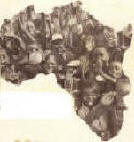POPULATION AND SOCIETY
COUNTRY REPORT
Country Reports should provide a social and demographic overview of the country under consideration for approximately the last half century. In addition, each Country Report should examine developments considered: (1) within the broader historical framework of global developments that occurred prior to and during the past 50 years; and (2) in terms of the most appropriate social demographic theory. In order to do this, each research group will need to collect longitudinal data on several critical demographic variables pertaining to the country under investigation that can be compared to available data on socioeconomic, health and/or environmental conditions for the same country. Reports should focus not just on national data, but, to the extent possible, should also delineate local and regional demographic, socioeconomic, health and/or environmental differences within the country under consideration.
* * * * *
DEMOGRAPHIC DATA include: Population size, density, growth rates, age and sex structure, fertility rates, migration, contraception practices (including infanticide, abortion, sterilization and the use of artificial birth control technology)
SOCIOECONOMIC DATA include: GNP, GDP, economic growth rates, inflation, productivity (agricultural and manufacturing, gross and per capita), percentage of women in the work force, imports, exports, per capita income, percent of labor force in agriculture, manufacturing or service industries, average age of labor force, use of child labor, degree of urbanization, family and household structure, social differences in rates of development.
HEALTH DATA include: life expectancy, morbidity and mortality, crude death rate, age/sex-specific death rate, infant mortality rates, maternal mortality rates, age specific death rates, prevalence of diseases (infectious, endemic, chronic, stress-related, social differences in health-related data (rural-urban, class, ethnic, gender, age).
ENVIRONMENTAL DATA include: air and water quality, soil quality, management and erosion, deforestation, desertification, changes in biodiversity, waste disposal practices and consequences, availability of critical resources.
